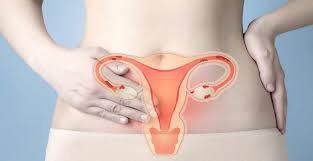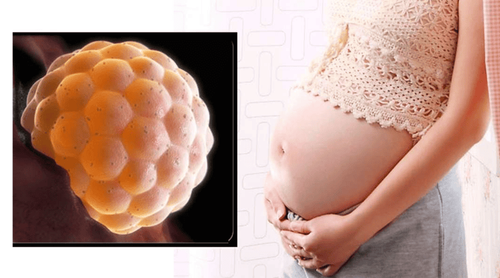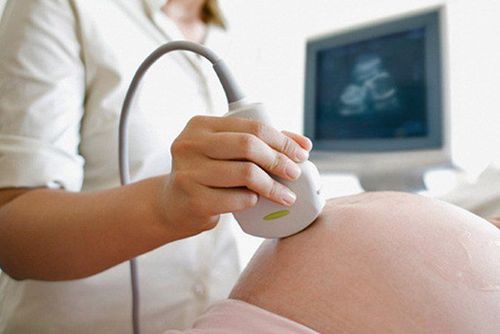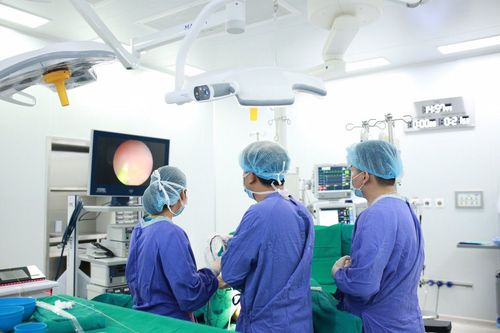This is an automatically translated article.
The article was professionally consulted by Specialist Doctor Obstetrician and Gynecologist - Department of Obstetrics and Gynecology - Vinmec Hai Phong International General Hospital.
While the majority of ovum pregnancies are benign, the condition still carries a risk of serious complications such as invasive oocyte retrieval or trophoblastic cancer. Menorrhagia after pregnancy is one of the common signs of pregnancy.
1. What is egg pregnancy?
Normally after fertilization takes place, the fetus with the same appendages and the amniotic sac will develop together. But if the trophoblastic cells grow too quickly to an abnormal extent, the connective tissue and the capillaries in the chorion will not develop in time. The placenta is gradually degraded and edematous, forming many fluid-filled sacs that stick together like bunches of grapes. These sacs are connected by small fibers, occupy most of the uterine cavity and are several tens of millimeters in diameter, overwhelming the fetus. This phenomenon is called oviposition, or oviposition.
The most common types of twinning are:
Whole ovum: The egg develops into a mass without an embryo; Partial ovum: There are abnormal embryos, only some parts of the fetus are incomplete and cannot develop fully. Until now, medicine has not been able to determine the cause of egg pregnancy. However, there are some risk factors that increase the risk of disease such as:
Age: Women under 20 years old and over 35 years old are prone to abnormal pregnancy; History of multiple births; Inheritance of DNA during fertilization; Malnutrition: Mainly lack of protein and vitamin A; There is a problem with the body's immune system.
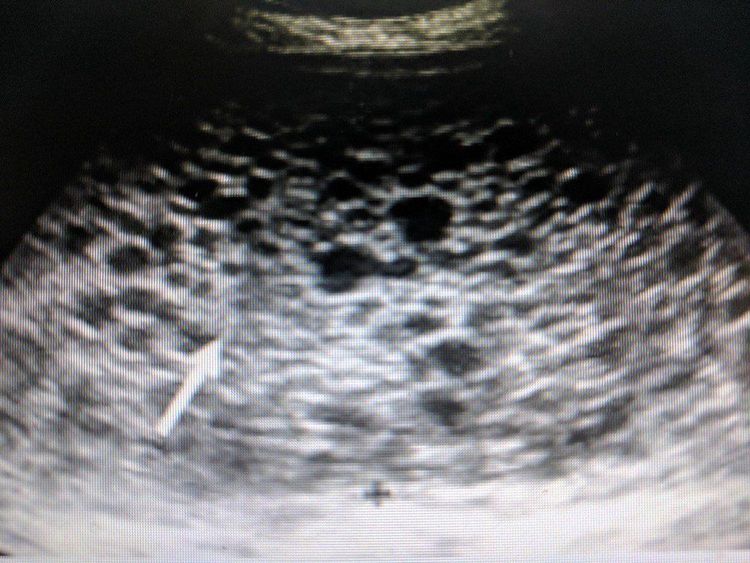
2. Signs of an egg pregnancy
Initially, the ovum has symptoms like a typical pregnancy. Then the unusual symptoms began to appear. For example, bleeding a few weeks after a missed period is the most common symptom in ovulatory women. Other specific signs of pregnancy are:
Vaginal bleeding: May be light or heavy, usually dark or bright red, thin and lasts for the first 3 months (up to 13 weeks); Manifestations of severe morning sickness: The patient vomits a lot and lasts a long time, the body is tired, pale, sometimes appears edema; Hypertension, proteinuria; Pelvic pain and compression; Abnormal uterine size: About 50% of cases, the uterus enlarges faster than the gestational age, the rest of the uterus develops normally or is smaller than the gestational age (recession of the ovum); With the above signs of pregnancy, this condition is easily misdiagnosed as threatened miscarriage in the early stages of pregnancy. Entering the middle of pregnancy, if the mother is pregnant with an egg, the doctor will not feel the fetal part, nor hear the fetal heartbeat.
In case of total ovum, there will be a few more typical symptoms as follows:
54% of patients have anemia with obvious iron deficiency; 27% of patients present symptoms of preeclampsia fairly early, in addition, may be accompanied by hyperthyroidism; In 7% of cases, signs of total pregnancy such as tachycardia, moist skin, trembling hands, increased FT3 and FT4 test results. One of the factors that have diagnostic value in determining an ectopic pregnancy is the ultrasound image of a blizzard in the uterine cavity and the absence of a fetal part. At the same time, a very high increase in βhCG (Beta Human Chorionic Gonadotropin) test, above 30,000 international units, is also a sign of ectopic pregnancy in addition to post-pregnancy menorrhagia.
3. Treatment of pregnancy
Pregnant women with eggs, if not treated early, will lead to many dangerous complications such as:
Blood loss, bleeding due to spontaneous abortion; Malnutrition; Invasive pregnancy; Pancreatic cancer is malignant, has a high risk of systemic metastasis and has a very high mortality rate. Therefore, the first thing to do when the patient has been diagnosed with ovum pregnancy is to remove the egg mass from the uterus in 1 of 2 ways:

3.1. Egg abortion (D&C)
When performing this technique, the doctor will give the patient an isotonic saline or sweet solution mixed with oxytocin to help contract the uterus and stop bleeding, and antibiotics to prevent infection. A vacuum under negative pressure is often used to speed up the aspiration process and avoid bleeding. In some cases, it is necessary to have a second abortion after 2-3 days to avoid residual eggs. The removed tissue tissue will be sent for anatomical specimens.
3.2. Surgery
This treatment indication will apply in the following cases:
The woman no longer wishes to have children; Patients over 40 years old; Invasive ectopic pregnancy with perforation of the uterus. Patients will undergo total hysterectomy or total hysterectomy after curettage.
4. Follow-up after treatment
Although the egg pregnancy status has been handled, it still needs close monitoring to promptly detect and treat malignant complications. Usually, over 80% of pregnancies after aspiration curettage go well. The rest continue to develop trophoblastic cells and secrete hCG leading to complications.
Therefore, about 2 weeks after curettage, the patient needs to go to the hospital for a quantitative beta hCG test. This test must be done every 2 weeks for the first 3 months, then every 6 months until the end of 12 months. Women need to be careful to avoid pregnancy within 1 year from the time of having an abortion to ensure safety.
In case of severe complications, the patient is forced to undergo chemotherapy or surgical removal of the entire uterus, depending on the extent. The treatment and monitoring time can be quite long, so the patient needs to strictly follow the doctor's instructions.
5. Possibility to get pregnant again
Women who have had an egg pregnancy will not have an effect on their fertility or their chances of becoming a mother, even if they have undergone chemotherapy. What's more, there's no increased risk of stillbirth, birth defects, premature birth, or any other complications with a subsequent pregnancy. The rate of pregnancy again is only about 1-2%.
However, patients still have to wait about 1 year after βhCG levels return to normal before planning to have children again. If you become pregnant before this time, your βhCG levels will increase again and your doctor is uncertain about the risk of the abnormal tissue returning g. Therefore, during pregnancy, women should go for regular ultrasounds according to the schedule in the first 3 months of pregnancy to ensure the health of the pregnancy.
At Vinmec International General Hospital, there is a package maternity service as a solution to help pregnant women feel secure because of the companionship of the medical team throughout the pregnancy. When choosing Maternity Package, pregnant women can:
The pregnancy process is monitored by a team of qualified doctors Regular check-up, early detection of abnormalities Maternity package helps to facilitate the process. birthing process Newborns receive comprehensive care
If you have unusual symptoms, you should be examined and consulted with a specialist.
Please dial HOTLINE for more information or register for an appointment HERE. Download MyVinmec app to make appointments faster and to manage your bookings easily.




